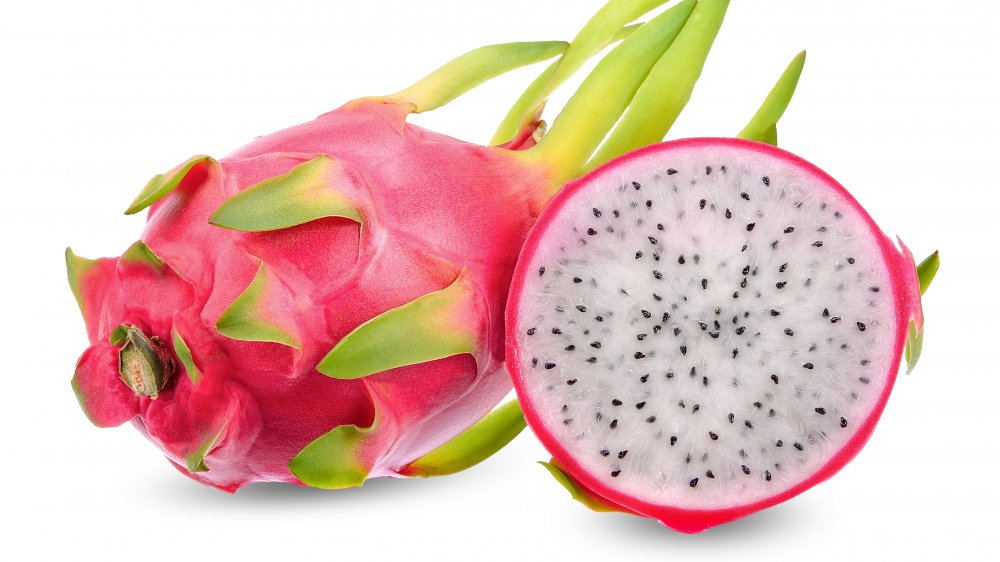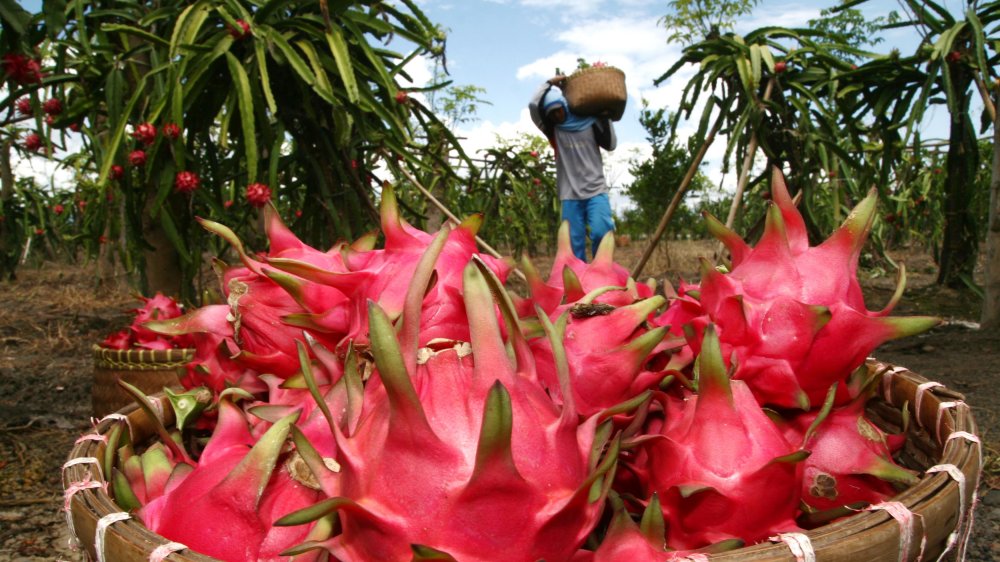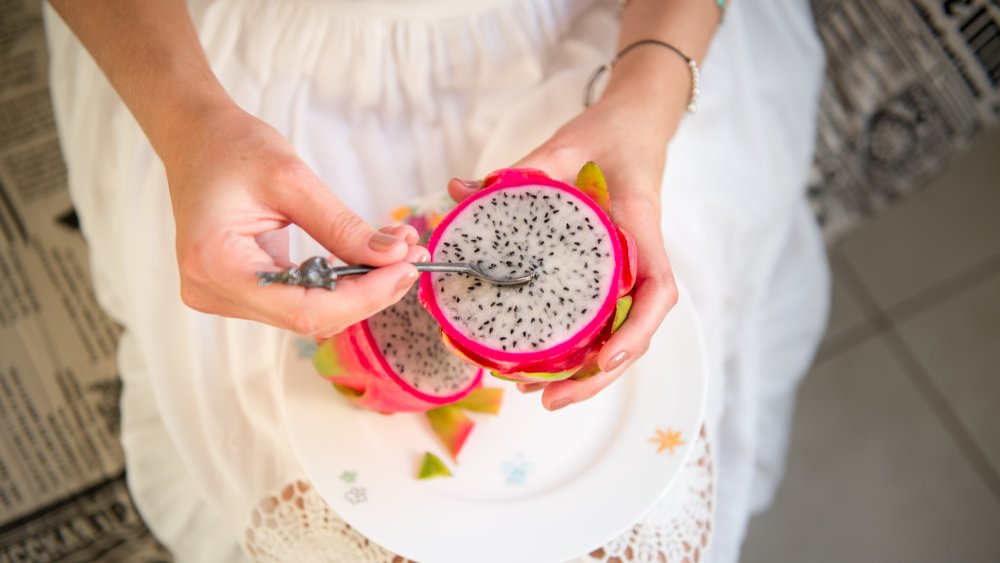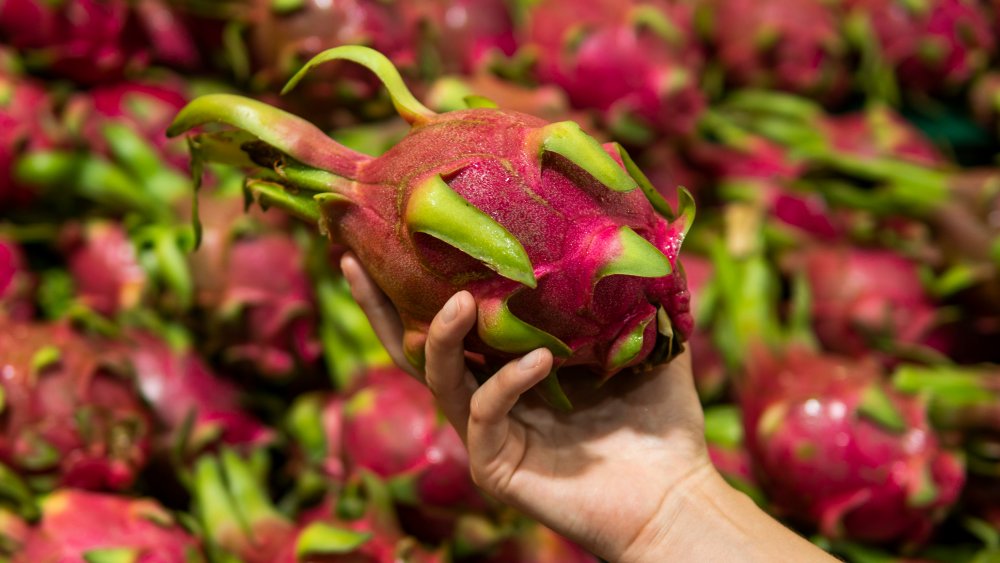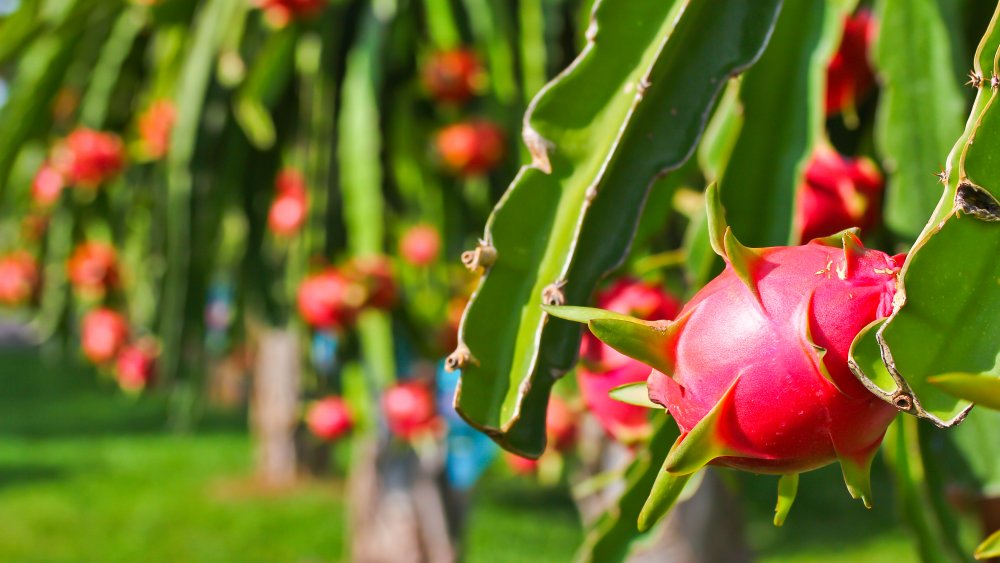Why Is Dragon Fruit So Expensive?
Dragon fruit is one of those fruits that commands the sort of attention a boring fruit like cantaloupe could only dream of. It's obviously quite exotic looking with its outer pink flesh and vibrant green leaves. Slice it open, and its flesh is just as impressive with white fruit that's bespeckled with tiny black seeds. Even the name says, "Look at me, I'm special!" Because of this, dragon fruit has garnered itself the same sort of reputation that has pushed other exotic fruits like pomegranate into the popularity zone.
If you go shopping for some dragon fruit, you'll probably notice pretty quickly that it's not the cheapest fruit in the produce section. It won't cost you as much as a square watermelon, but it's considerably more pricey than bananas too. What's up with dragon fruit's high price, and is this cool looking and mildly sweet fruit even worth it?
Dragon fruit is often an import and that can drive up the price
According to the Food Network, this exotic fruit will set you back a pretty penny, and can even sell for as much as $10 each. That's a lot of dough for a fruit that's not much bigger than an orange. As it turns out, there are likely a few reasons for its high price tag.
First off, the fruit is native to Mexico, Central, and South America, so a lot of it is imported into the United States — although we get most of ours from Vietnam. That alone makes it pricier than a domestic fruit such as red delicious apples. California, Florida, and Hawaii do grow the fruit, but natural disasters such as droughts, hurricanes, and wildfires can really give an economic gut punch to the agricultural industry of those states (via The New York Times). It doesn't help matters that dragon fruit's harvest season — June through September — also happens to lead into wildfire and hurricane season (via Agricultural Marketing Resource Center).
There's a higher demand than supply
The law of supply and demand dictates the cost of nearly every commercial good, and dragon fruit is no different. When you consider the appeal of dragon fruit, it's definitely been hyped up over the last decade (via The New York Times). According to the Agricultural Marketing Resource Center, the demand for dragon fruit in the United States exceeds the supply available — thus a higher price at your local fruit stand.
Organic fruits and vegetables also tend to cost more than the run-of-the-mill variety and organic dragon fruit can cost double the price. Shelling out up to $10 for dragon fruit might seem pretty steep, but this doesn't stop fans of it from touting its numerous health benefits.
Dragon fruit is loaded with health benefits
Considering the variety of health benefits associated with dragon fruit, maybe the phrase should be "a dragon fruit a day keeps the doctor away." That may not roll off the tongue quite as well as "an apple a day," but the health benefits of this fruit are what make it so popular with foodies.
According to Healthline, the fruit is rich in prebiotic fiber and other vitamins and minerals such as magnesium and vitamins E and C. It's also a food that's high in antioxidants, which may make it beneficial in combating everything from heart disease to diabetes and arthritis. News outlets such as Time have pointed out how, in recent years, there's been more focus from the health community on the importance of gut health. Guess what fruit has been linked to promoting gut health? Ding, ding, ding — dragon fruit!
This is because the fruit helps to promote the growth of two types of healthy bacteria that you actually want in your stomach – lactic acid bacteria and bifidobacteria.
You may be able to beat the cost of buying it by growing it
So what's a person to do who enjoys eating this exotic fruit on the regular, but doesn't want to pay the high price for it week after week?
Well, the good news is that if you live in a warm and humid climate like South Florida — or have a greenhouse — you can probably avoid the pricey cost by growing your own. Dragon fruit is part of the cactus family, and according to the Miami Herald, gardeners can either grow it from a seed or through stem cutting of an existing plant. Plants grown from seed can take a few years to produce fruit, so the latter method is probably a better option if you hope to enjoy dragon fruit smoothies as soon as possible.
Dragon fruit will likely never be as cheap as other fruits in your grocery store's produce section, but for some, its exotic look and health benefits are worth the price.
